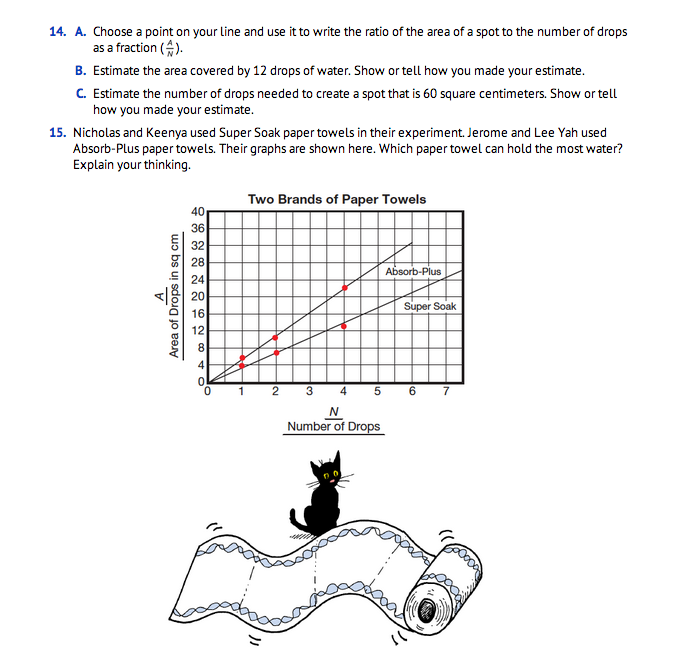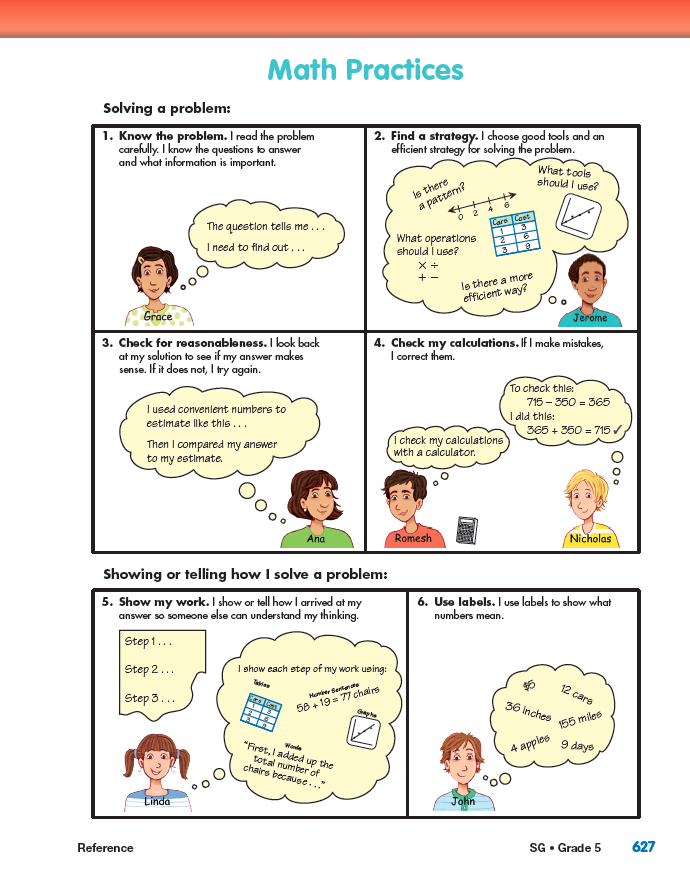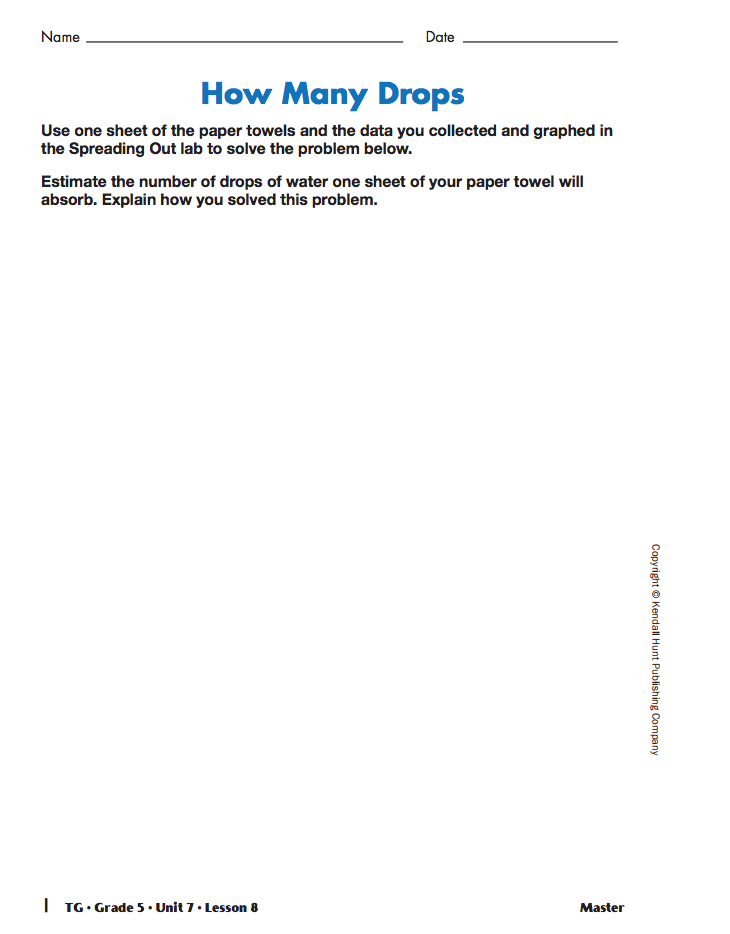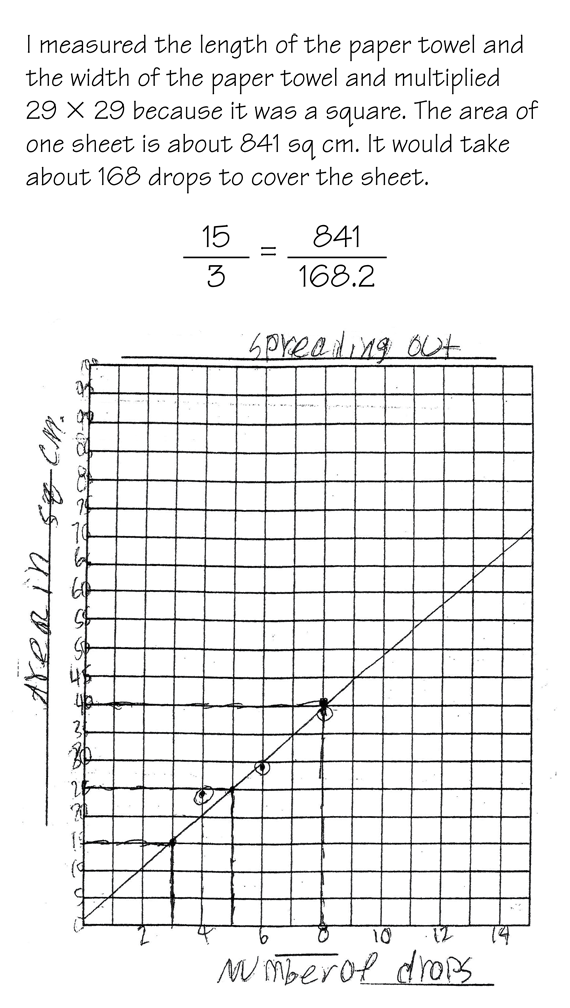Spreading Out
Est. Class Sessions: 4–5Developing the Lesson
Part 4. Communicate Problem Solving Strategies
Use Ratios and Graphs. In this part of the lesson, students will solve an extended response problem and explain their problem solving strategies. Students will use their data table, graph, and their understanding of ratios to help them. Before students begin the problem, ask them to look at their solutions for Questions 14–15.
Ask:
Understanding the Problem. Provide each student with a copy of the How Many Drops Assessment Masters. Ask students to read the problem carefully and to think about what it is asking them to do.
Ask:
Tell students that they will use all of this information to help them solve the problem on the How Many Drops Assessment Master.
Ask students to first work independently on the problem. After a few minutes, students can work with their partner(s). As students are workings, circulate around the room listening to solution strategies. Support students who need help clarifying their thinking and managing the multiple steps of this problem. See Sample Dialog.
Communicate Solutions and Problem Solving Strategies. Encourage students to talk about their solutions and the steps they used to solve this problem with their partners to help them organize their ideas before putting them in writing. The Meeting Individual Needs box provides some suggestions for way to share student thinking.
After students have had time to talk about their solutions, choose one or two pieces of student work to review to help set and clarify expectations for problem solving and communication. Ask students to look at either the display of the Math Practices page or the Math Practices page in the Student Guide Reference section. Tell students that they are going to focus of Math Practices Expectations 1, 2, 5 and 6 as they review the sample student work. Several of the strategies that can be used to solve this problem are shown in Figure 9.
Review George and Irma's Work. There are two samples of student work to serve as models for you and your class. Choose pieces of work from your own class to review and discuss as appropriate. After expectations have been discussed, give students time to revise the explanations they prepared earlier.
Use these or similar discussion prompts to review George and Irma's work in Figure 10. Display the How Many Drops Feedback Box Student-to-Student section on the How Many Drops Masters. Evaluate the work and give feedback to “George” and “Irma.” See Figure 11.
Ask:
Review Debbie's Work. Ask students to look at Debbie's work. See Figure 12.
Use these or similar discussion prompts to review her work. Figure 13 shows a possible feedback box for Debbie.












 .)
.)








